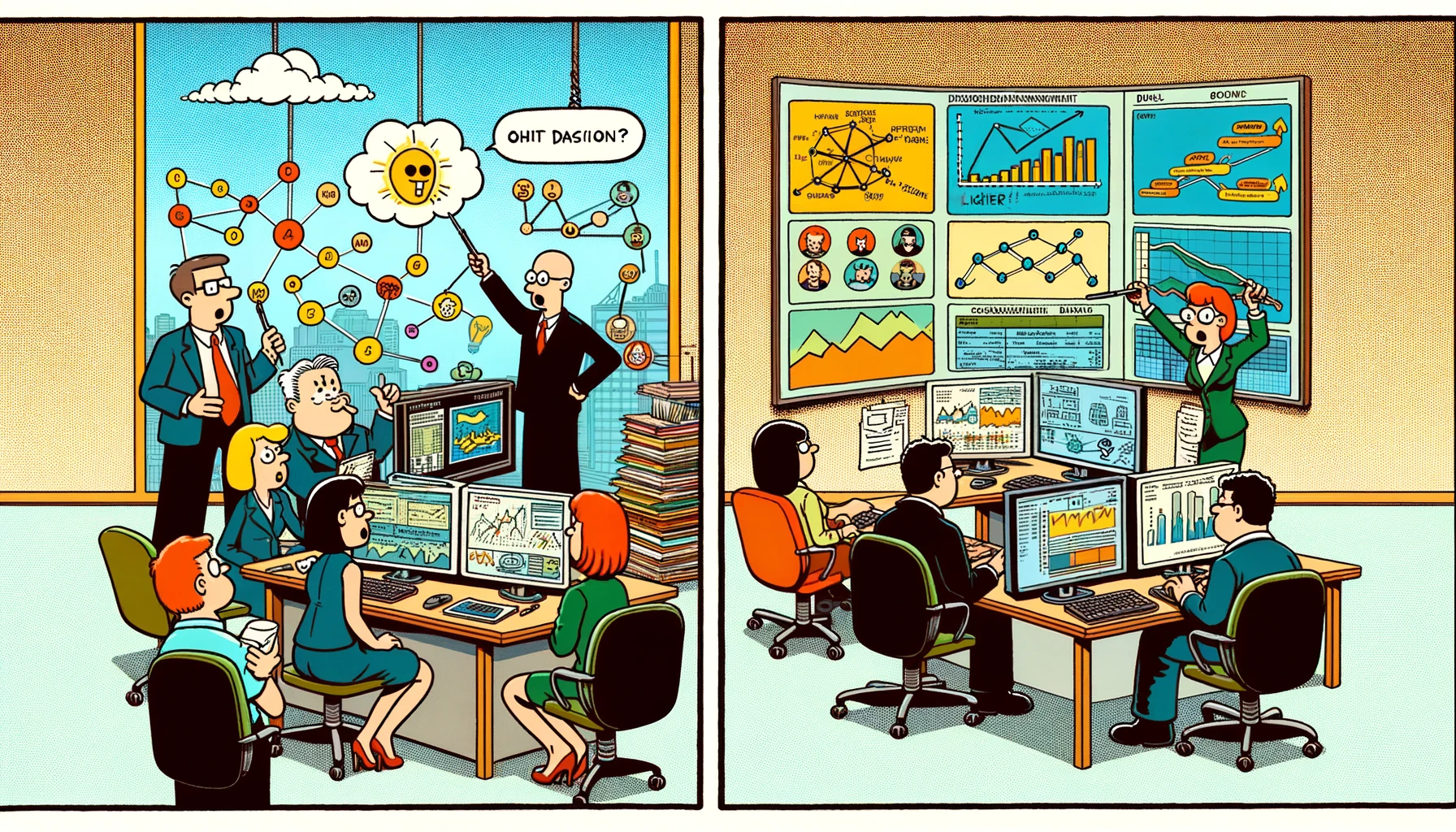
Blog post
The #1 Reason Why People Leave Companies: How Performance Management Can Stop It
Performance management can help you retain your best employees. Here's how.

The pandemic may have triggered the Great Resignation, but while lockdowns end, workplace attrition rates stay high. The number of Americans who quit their jobs in January 2022 rivaled November 2021’s record-breaking 4.5 million.
This “Great Reshuffle” is creating more opportunities as job openings also reach record numbers. Even those happy in their positions may be headhunted or merely tempted by new prospects.
One main reason people leave companies is to further their career growth. “Limited opportunities” consistently appears as a key factor in why people quit.
How can you use performance management to help your company retain your best employees?
Leaving for Career Growth
Among U.S. workers who quit their job in 2021, 63% cited “No opportunities for advancement” as a top reason, tied for first place with “Pay was too low.” With bountiful job openings on the market, those stuck in stagnant positions finally had the confidence to leave.
That left employers with the need to rehire. The average cost of rehiring a single position, including recruitment and training, is $5,125. Rather than trying to ride out the quitting wave by hiring relentlessly, businesses must evaluate what they can do now to manage talent and improve retention.
Action Plan for Retention
Here are four steps your business can take to help employees progress within your company rather than leave.
1) Identify Top Performers
Discover your company’s top employees and learn what they do differently. What actions do they take that make them stand out? What skills do they have that their peers don’t? It’s difficult to fully capture these key differentiators if you rely solely on annual performance reviews. You need quantitative data on all aspects of their performance, not just qualitative comments made once per year.
That includes feedback from each employee’s coworkers. Camaraderie, mentorship, and team efficiency are all critical predictors of workplace satisfaction. Coworkers also provide valuable insights into each employee’s strengths.
Once these inputs become measurable, they can inform better decisions on training and promotion.
Leveraging organizational network analysis can help you identify top performers and discern what they do differently. This allows them to nurture growth potential. Plus, you can identify training opportunities to extend to others.
2) Know Who To Retain — And Promote
It’s challenging to fully assess someone’s leadership potential, especially if they are not in a position to show off their skills. Traditional performance reviews often allow implicit bias that obstructs fair, objective assessments of those skills.
They also fall short in determining who is a good fit for your company’s culture, philosophy, or standards.
While navigating the Great Reshuffle, use organizational network analysis data to determine who among your team is best suited for progression. Consider, too, who has clear leadership potential yet little opportunity to prove it. By leveraging objective, quantitative data, you can give everyone a fair shot.
3) Promote Internally When Possible
As we mentioned, career growth is the number-one reason workers seek new jobs. When a position becomes available in your company, look internally first. Show employees that you value their commitment to the company more than the fresh blood of an external hire.
Then, consider which of your current employees would most thrive in the open position. Review the key differentiators and performance data you discovered in Step 1.
Keep in mind, not all top performers are interested in moving to a new position. They may wish to remain in their current role but with higher pay or more support staff, for example. Ensure your top performers have a path to progression that aligns with their skills and goals within your company.
If no one within the company seems to have the exact skills required for a vacant position, consider what training your company could offer to transition an internal candidate into that role. Again, robust quantitative data about your team can help you identify gaps and opportunities.
4) Provide Training to Develop Employees’ Skills
If you’re debating an external hire over an internal one, it may be because you identify valuable skills in the external candidate that the internal one lacks. Launch a training program to teach those skills to your employees. For example, you can help employees move into a managerial role by training them to efficiently lead projects and forge strong teams.
Educational opportunities within your company show your employees that you value their time and want to empower their futures. That’s critical to retaining staff who may not otherwise perceive a reason to stay. Help individuals take the next steps up the ladder or shift into a position where they can thrive.
How Performance Management Solutions Can Help
Workplace satisfaction is crucial to preventing attrition. Progression opportunities address one of employees’ top concerns. However, they are also concerned about burnout, work–life balance, and healthy workforce dynamics. Organizational network analysis can help your managers understand more about their teams.
Performance management solutions, e.g. Confirm, can provide that data. It allows organizations to reward good performance and build stronger workforces. Both are key ingredients for high employee satisfaction.
Performance management software allows managers to equitably recognize team members and discover those at risk of attrition.
It also prepares your company for growth by identifying those who deliver the most value. Your managers can:
- find and nurture breakout performers
- efficiently promote from within
- build “dream teams” to meet your objectives
Most importantly, network-based performance management provides more objective data with less risk of implicit bias or dependence on traditional employee reviews. This equitable approach helps eliminate suspicions about favoritism or special treatment, thereby increasing morale and reducing flight risk.
Follow The 5 R’s for Retention
No matter the reason your company is struggling with retention, remember the five R’s laid out by Harvard Business Review.
1) Responsibility
An employee can’t move up in the company with only the skills they had upon hiring. To broaden an employee’s qualifications, allow them to take on more responsibility within their current role. Then they’ll be ready for the next steps in their career. Network-based performance management can help managers identify each employee’s growth potential, based on peer insights and past achievements.
2) Respect
In a 2021 Pew Research study, “feeling disrespected at work” was the third-highest reason for leaving employment. Respect will always be key to people’s motivation and satisfaction. Traditional performance management can leave employees feeling unheard or unappreciated, especially if they are a member of a minority group.
When your staff feels heard and respected, they’ll continue working toward your company’s goals. Moreover, they’ll be less likely to look elsewhere for the recognition they deserve.
3) Revenue-Sharing
Revenue-sharing is not limited to commission-based salaries. You could also increase employee compensation based on how well the company is doing. Keep your employees invested in your company’s success (and by extension, their projects) by letting them reap the rewards in their bank accounts.
4) Reward
Rewarding excellence goes beyond giving positive comments. Implement both tangible and spontaneous reward systems to recognize employees who go above and beyond. Not only can they serve as powerful incentives, but they also show that you acknowledge and value employees’ contributions. Objective, quantitative performance data gives you even more opportunities to celebrate their talents.
5) Relaxation Time
Giving employees more time off is an investment in their overall wellness and productivity. Poor work–life balance is a top risk factor for attrition.
By providing PTO, you combat burnout and make workers feel appreciated. Make it part of the company culture to be generous with break times rather than micromanaging the staff. Let employees set their own pace and watch as they flourish.
Manage and Keep Talent with Confirm
Confirm is designed to help you keep the fantastic talent you’ve found. By assessing thousands of data points, it spots attrition predictors so you can address them in time. Stay on top of everyone’s performance, identifying both top performers and flight risks.
Confirm also lets employees log in to track their own performance rather than having to wait for a performance review. Executives can access measurable evidence of the company’s achievements and growth at any time.
The software can even track redundant work and help managers form their most efficient teams. Plus, it provides a directory of every employee’s accomplishments and talents. Who moved the needle on top projects? Who mentors and motivates their coworkers? Confirm has all those insights and more.
Try Confirm’s Performance Management Software
In today’s job climate, performance management is necessary. Without them, talent can disappear before you get the chance to understand why. Stay on top of what’s happening within your company and keep your talent performing at its potential with Confirm.
Try out the solution before you commit with a free demo, and see how it can transform your communication and training processes.
Latest posts

Ready to see Confirm in Action?
See why forward-thinking enterprises use Confirm to make fairer, faster talent decisions and build high-performing teams.









